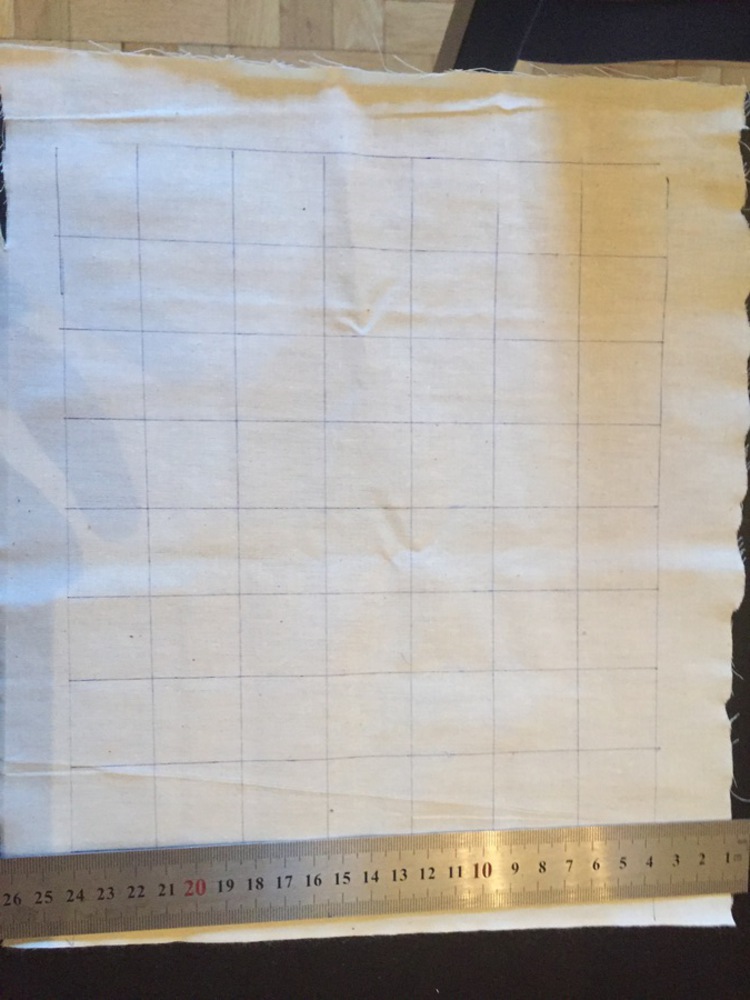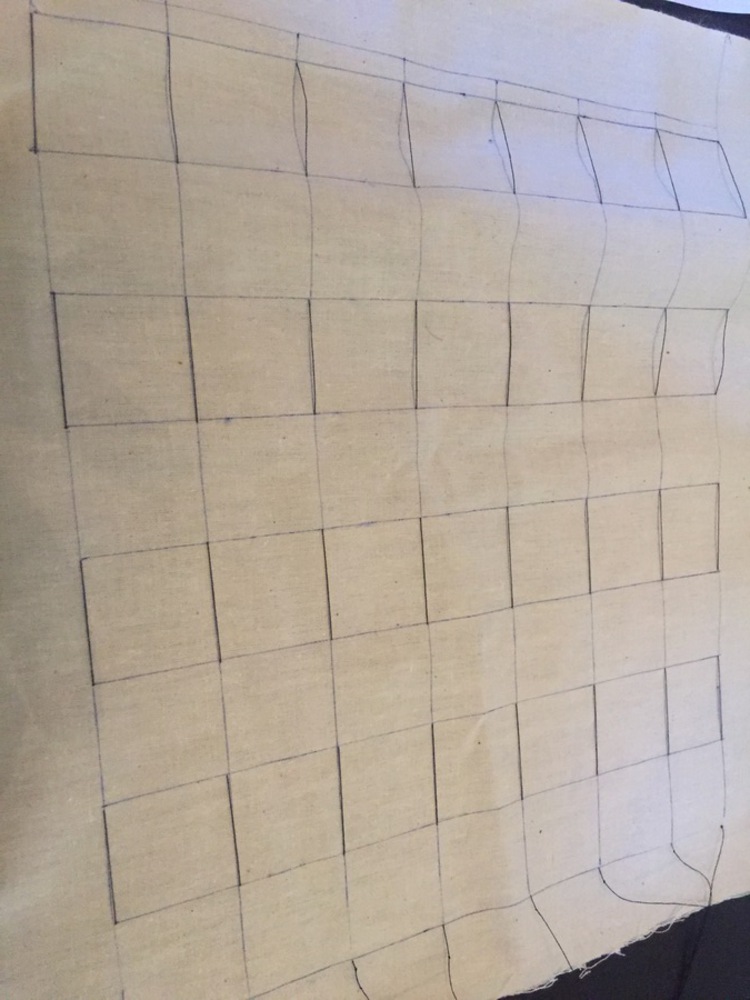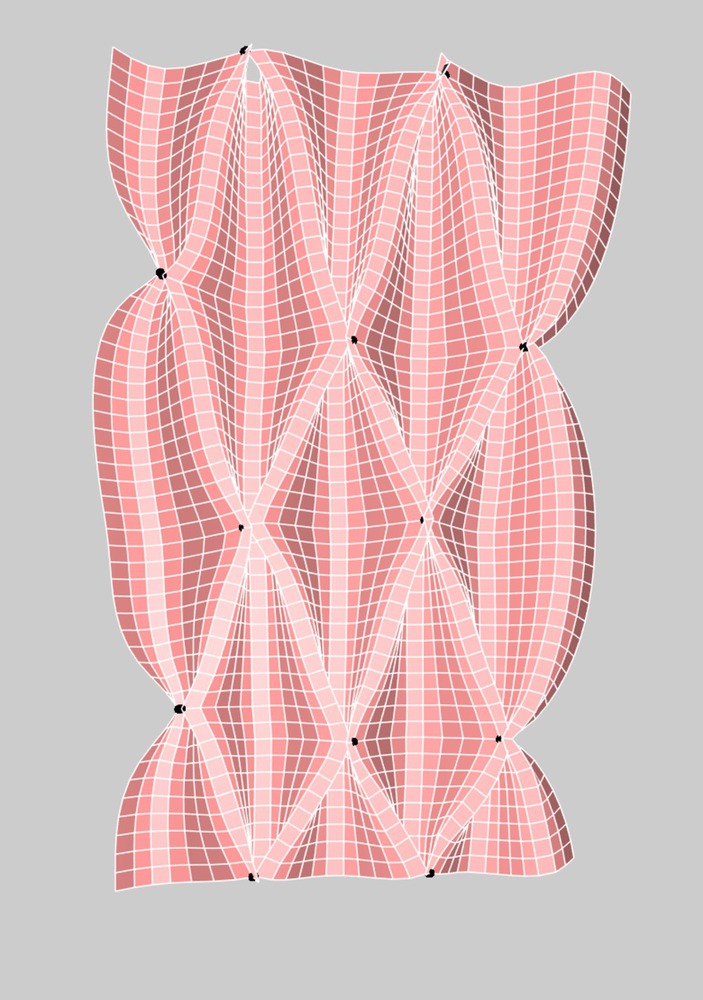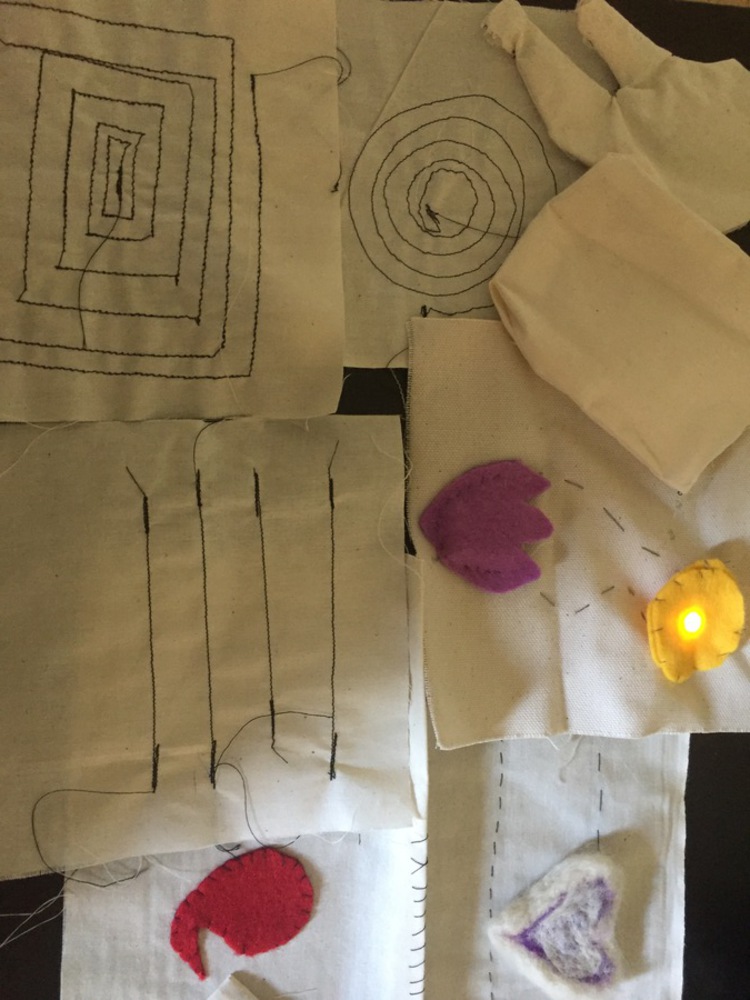Intention
I am interested in textiles and building computational design tools. Smocking is an interesting way to manipulate surface shapes, I wanted to see this can be mimicked computationally as well as explore hand smocking.
Process
A large number of smocking examples have the following flavor -- pleat the fabric using a running stitch, then gather pleats by sewing them together to hold the connection to create interesting surface textures.
After going through various hand smocking tutorials, I decided to begin with a very simple honeycomb pattern for hand smocking. During hand smocking, I realized that a sinusoidal grid mesh can be used to mimic a pleated surface instead of trying to simulate pleating. Woven fabric can be mimicked with a grid quad mesh with the constraint that all the faces try to remain planar quads. By adding a spring or closeness constraints between pleat points that are gathered together, the surface automatically relaxes to a shape that appears like a smocked fabric.
Product
I created a simulator to mimic a simple smocking technique. I also created a hand smocked honey comb pattern to build intuition to code up the simulator as well as verify the result.
The hand smocked prototype was created by sewing on a linen fabric.






